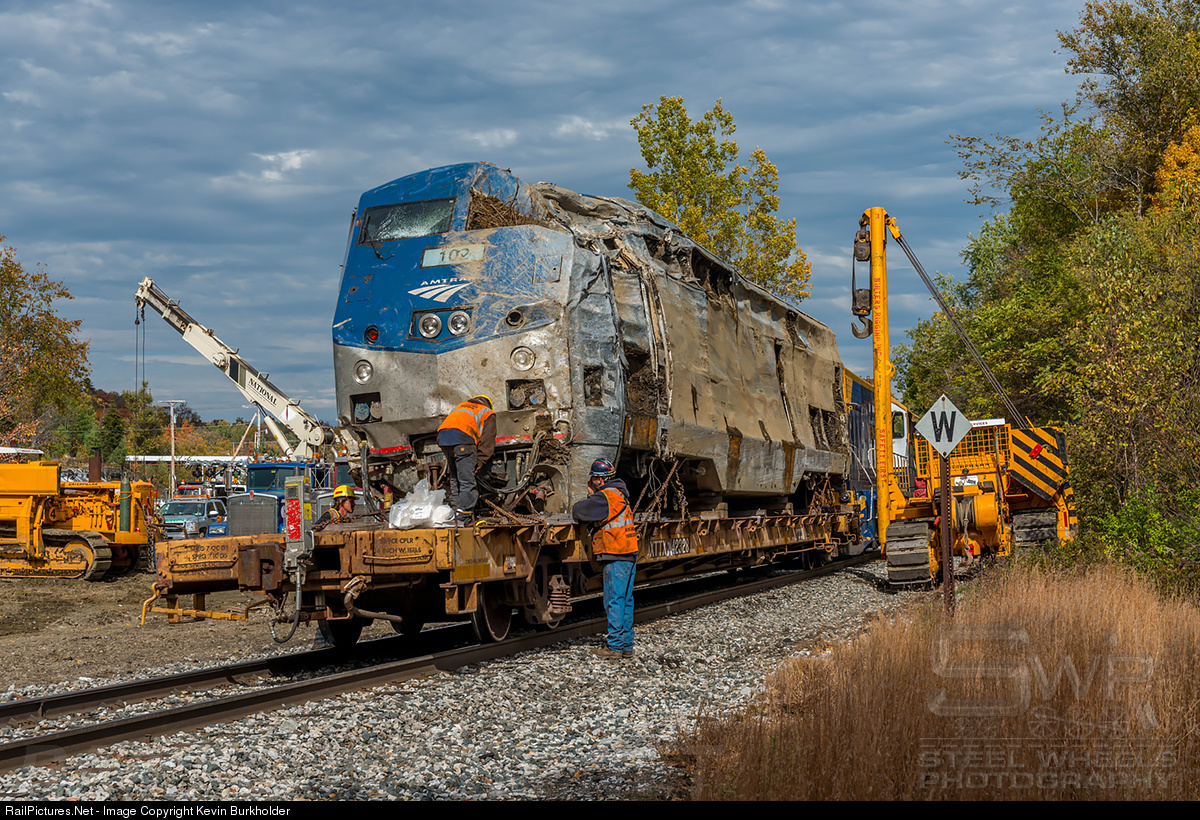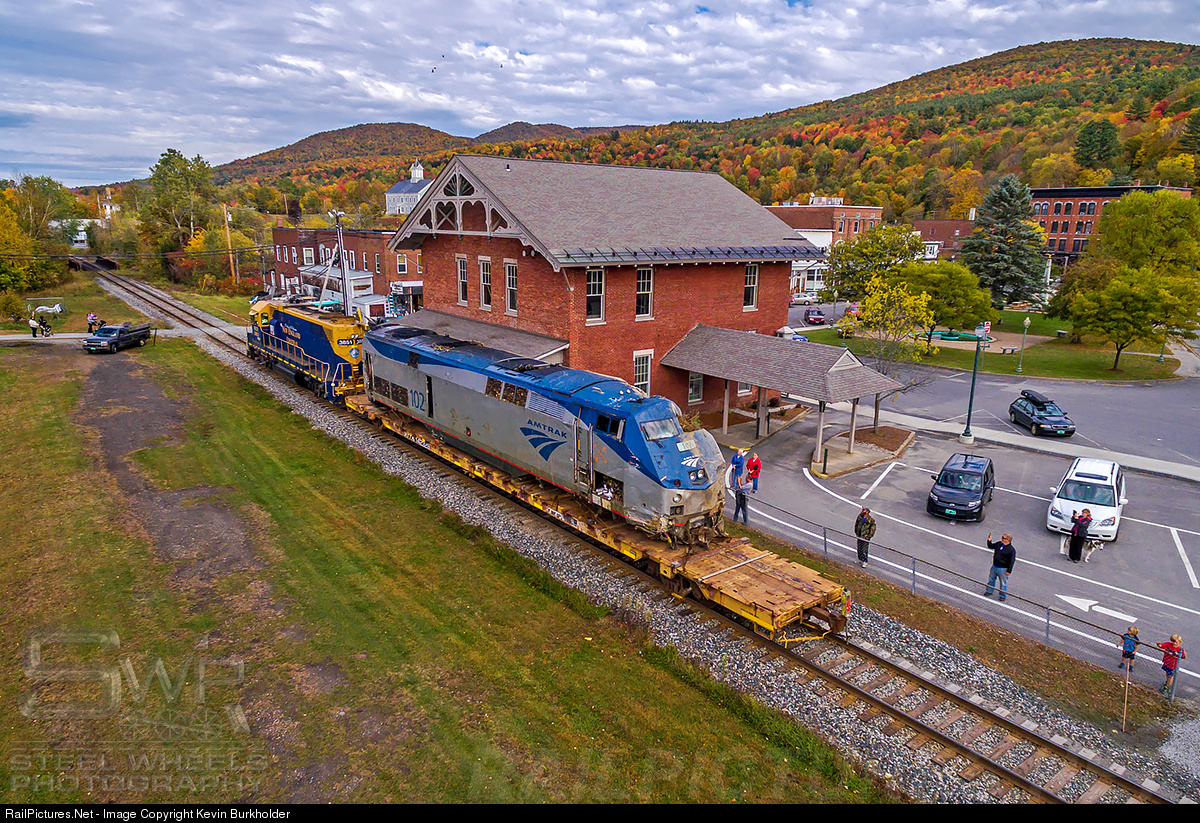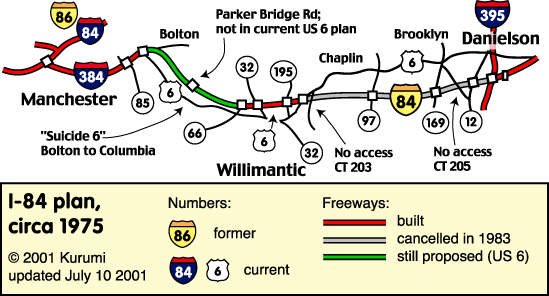Here's what it looked like after they got it upright. It passed through MA yesterday yesterday via NECR to Palmer and CSX to Albany. . .
Now, from the RR.net thread on the accident the longtime RR employees said not to get caught up too much in looks. Stuff way more 'totaled' than this has made it all the way back like nothing ever happened. The frame wasn't compromised at all except for the engineer's cabin which obviously took a large tree from all the branches sticking out of that dented corner. Most of what you see on that seemingly destroyed side is superficial damage to the skin. Because 102 leaked zero fuel or oil the engine compartment wasn't compromised at all despite the nasty fall and couple days suspended at a 100-degree angle; all the mechanical components should be fine. They gave it par odds of being repairable.
GE Genesis frames can be hard to repair because they're monocoque (single-piece) design, so that would be the only reason why #102 wouldn't run again. If by "#102" you mean the frame with #102 painted on the side. Amtrak has many stored P42's at its main shop in Beech Grove, IN...some of them sound frames that are missing engines due to fire, others like this, others that are completely totaled and just there to strip for scrap. So if 102's frame is too far gone, it'll almost certainly instead become an engine donor that gets a different stored locomotive put back into service as a like-new unit. Either way they're not going to lose one off the active roster (though I'd expect it to take a year or two before they've had enough shop time to do a special heavy-repair project like that).
That's why they made every painstaking effort to rescue it instead of blowtorching it onsite. Cut it up onsite and they end up cutting up the pristine-condition engine and throw away any shot at returning "a" locomotive to service by matching up parts, whether as #102 or under a different number. Here they're almost certainly not going to need to write off a couple million dollars worth of lost equipment.







































